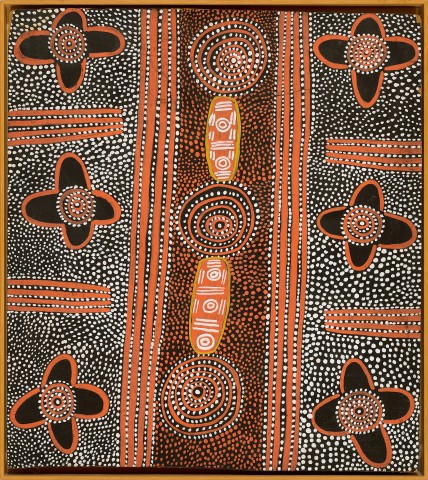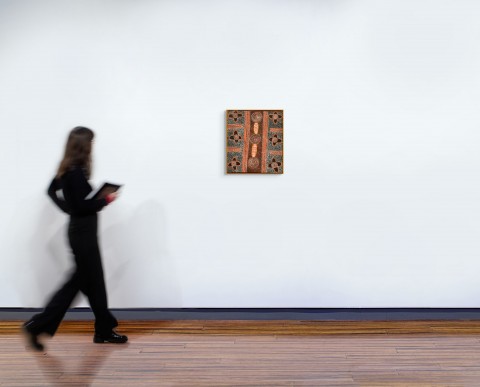WOMEN'S TRAVELLING BUSH TUCKER CEREMONY, 1972
LONG JACK PHILLIPUS TJAKAMARRA
synthetic polymer paint on composition board
51.0 x 46.0 cm
Private collection, purchased directly from the artist at Papunya in 1972
Sotheby's, Melbourne, 28 June 1999, lot 79 (as ‘Untitled (Women's Ceremony)’)
Private collection, Tasmania
Sotheby's, Melbourne, 24 July 2007, lot 249
Private collection, Sydney
Deutscher and Hackett, Melbourne, 18 May 2011, lot 155
Private collection, Melbourne
Long Jack Phillipus Tjakamarra was born at Kalipinypa, a major Water Dreaming site, northeast of Walungurru, in his mother’s country. When Long Jack was a teenager, he and his family group walked into Haasts Bluff, where he worked as a timber cutter and stockman. From 1962, he moved with his family to Papunya where he gained employment as a grounds man and was a member of the community council. A deeply religious man, he was both a missionary and pastor for the Western Desert People, as well as being highly learned in traditional culture.
In 1971, Tjakamarra, along with Billy Stockman, painted small murals around the Papunya School – preceding the major Honey Ant murals collaboration by Papunya artists. These early works were highly iconographic, often made up of simple geometric shapes, such as roundels, ovoid forms and crescent shapes. He painted water, Wallaby, Kingfisher, Dingo, Possum, Emu and Women’s Dreamings. Equally at home with Ngaliya/Warlpiri artists, such as Kaapa Tjampitjinpa, as he was with his Pintupi classificatory uncle, Uta Uta Tjangala, Women’s travelling bush tucker ceremony, 1972 was most likely painted in late 1972, with the symmetrical composition and mirroring components suggesting the strong influence of Kaapa.


